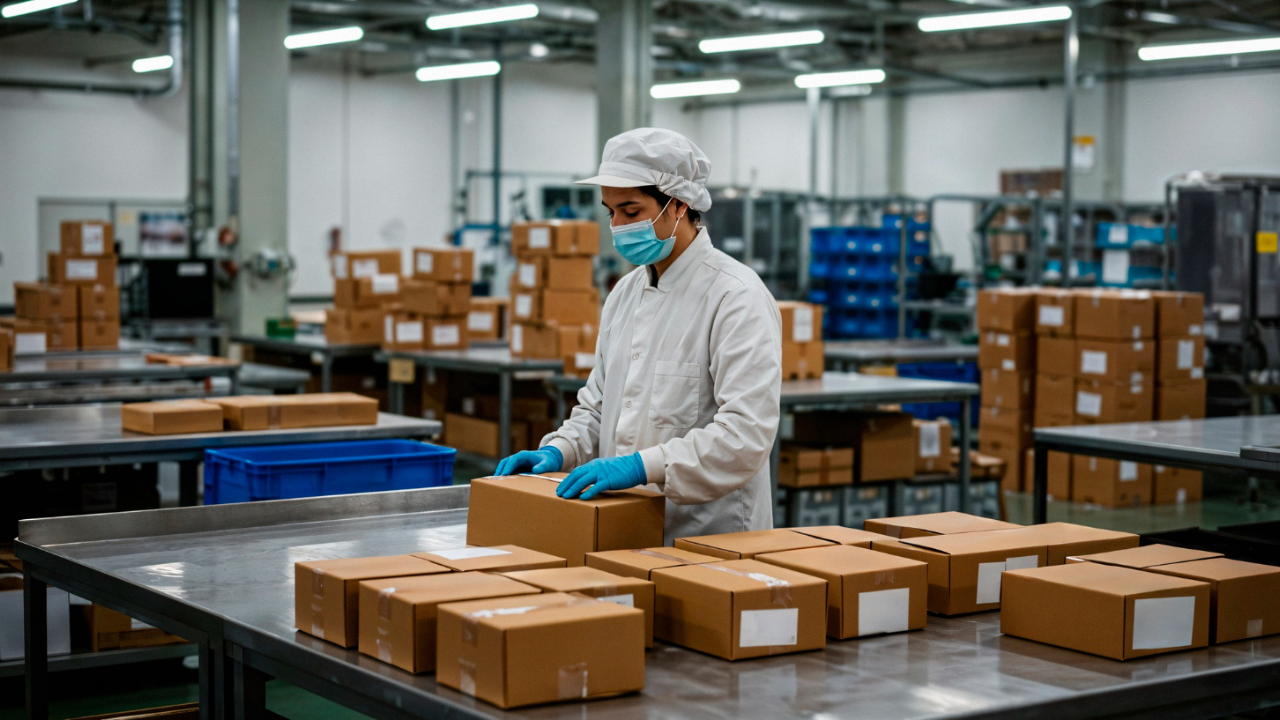Feeding The Surge: How Seasonality Influences Food Supply Chains
24 November 2025
4 Mins Read

- What Is Food Logistics Management?
- Key Challenges Of Seasonality In Food Logistics Management
- How Does Cold Chain Management Impact Seasonal Food Logistics?
- Inventory Management Tips For Seasonal Food Logistics Management
- How Labor Availability Impacts Seasonal Food Surges?
- How To Mitigate And Prevent Risks With Seasonality In Food Logistics Management?
- Managing Food Logistics During Seasonality The Right Way
Seasonality in any business can disrupt operations. Slowing the processes and impacting the overall smooth workflow.
Similarly, in the food Supply Chain, seasonal patterns of demand can create massive planning issues for both production companies and the suppliers.
That is, if the demand trend cannot be predicted with proper insights, managing the diverse processes in production and delivery can become disruptive.
For instance, when the demand increases, food logistics need to boost their capacity with storage, labor, as well as transportation. Making the overall management efficient and scalable.
Moreover, seasonality in demand can further impact packaging, temperature regulations, and supply options. Boosting the need for a flexible fulfilment management strategy.
So, if you are also wondering how seasonality in food logistics management works, I have got you covered.
In this blog, I am going to explore the diverse aspects of food logistics management and share tips to handle demand seasonality.
So, keep reading to know more!
What Is Food Logistics Management?
Before delving into the various ways to counter seasonality in demand, it is vital to have a comprehensive idea about how food logistics management works.
Primarily, the food logistics management refers to the entire flow of planning, implementation, and controlled transportation of stored food items to the customers.
That is, it involves the complete management of the supply chain in the food industry.
So, companies usually handle their inventory, warehouse, distribution, and transportation to minimize waste and operational expenses.
Key Challenges Of Seasonality In Food Logistics Management
Given that the food logistics management follows an organized workflow, seasonal fluctuations can massively impact it. So, here are some of the key challenges of seasonality in food logistics—
- Fluctuations in demand and supply of food items lead to an imbalance in meeting the customer needs with the right amount of products.
- Moreover, the fluctuations can lead to immense waste production in the inventory. Since food items are perishable, storing them with no demand can lead to waste production.
- In addition to this, relying on a single vendor for raw materials with seasonality in the supply can disrupt the overall production cycle. So, it is better to have more than one vendor in the list.
- Finally, managing perishable food items without the right kind of technology can adversely impact the management. So, companies need to employ the right tools and technologies for better food management.
So, to combat these challenges, the food logistics providers need to devise a proper strategy. This way, they can effectively manage the fluctuations of both the demand and the supply.
How Does Cold Chain Management Impact Seasonal Food Logistics?
Cold chain management is one of the most demanding aspects of seasonal logistics.
Temperature-sensitive items, including produce, dairy, and meat, require uninterrupted refrigeration from the farm through processing, storage, distribution, and final delivery.
Even short lapses can lead to spoilage, wasting product, and reducing available capacity while increasing costs throughout the system.
Maintaining a dependable cold chain requires strong investments in cooling infrastructure, real-time monitoring, and backup plans.
It also relies on coordinated action across farmers, processors, carriers, and distributors, each responsible for protecting product quality.
As consumers place more emphasis on freshness, the ability to consistently maintain cold chain integrity has become both a requirement and a key competitive advantage for logistics providers.
Inventory Management Tips For Seasonal Food Logistics Management
Packaging and inventory staging also come under pressure as seasonal products arrive. Crops must move quickly from harvesting sites into storage and then into distribution channels.
To support this flow, staging areas need fast turnaround times, adaptable pallet layouts, and responsive inventory planning.
When goods spend too much time sitting, storage becomes constrained, accuracy declines, and delays ripple into order fulfillment.
Addressing this challenge requires strong operational discipline supported by technology-driven visibility platforms that help ensure efficient movement and optimal storage utilization.
How Labor Availability Impacts Seasonal Food Surges?
Labor availability is another major factor in how well supply chains respond to seasonal surges.
Peaks in activity often require additional staff for tasks such as sorting, packing, inspection, and shipping.
Logistics providers must be able to scale their workforce rapidly, often hiring temporary or specialized workers.
Recruiting, training, and retaining staff during these peak periods introduces additional cost and complexity.
This makes workforce planning as important as physical infrastructure, demanding both foresight and flexibility.
How To Mitigate And Prevent Risks With Seasonality In Food Logistics Management?
Risk management becomes increasingly important during seasonal transitions as well.
Weather disruptions, transportation delays, and unexpected demand shifts can challenge even the most carefully designed plans.
Proactive strategies, including safety stock, alternate routing options, and rapid-response teams, help sustain throughput when conditions change suddenly.
The most successful supply chains treat seasonality as a predictable recurring challenge rather than a rare complication, building systems that anticipate and absorb volatility.
When risk management is seen as a fundamental discipline, it strengthens resilience and trust across the entire network.
Managing Food Logistics During Seasonality The Right Way
Since the seasonal surges in demand are hard to stop and harder to avoid, managing the food logistics becomes vital.
That is, the food logistics providers employ diverse strategies to effectively manage the seasonal surges. So, they aim to convert the demand into viable products.
And that too without increasing the delays, waste production, or exceeding the storage capacity. So, allowing businesses to counter the surges without diving into major challenges.
Moreover, with strategic planning, food logistics can maintain continuity and reliability. That is, they can ensure that the customers get the food products from the production houses efficiently.
So, the food logistics companies can pave the way from the farmlands to the consumers with efficiency. Managing the seasonality with the right strategies.
For a deeper dive into seasonal food logistics and strategies for managing demand cycles, explore the companion resource from Murphy Logistics, a commercial warehousing logistics company.
Read Also:

















